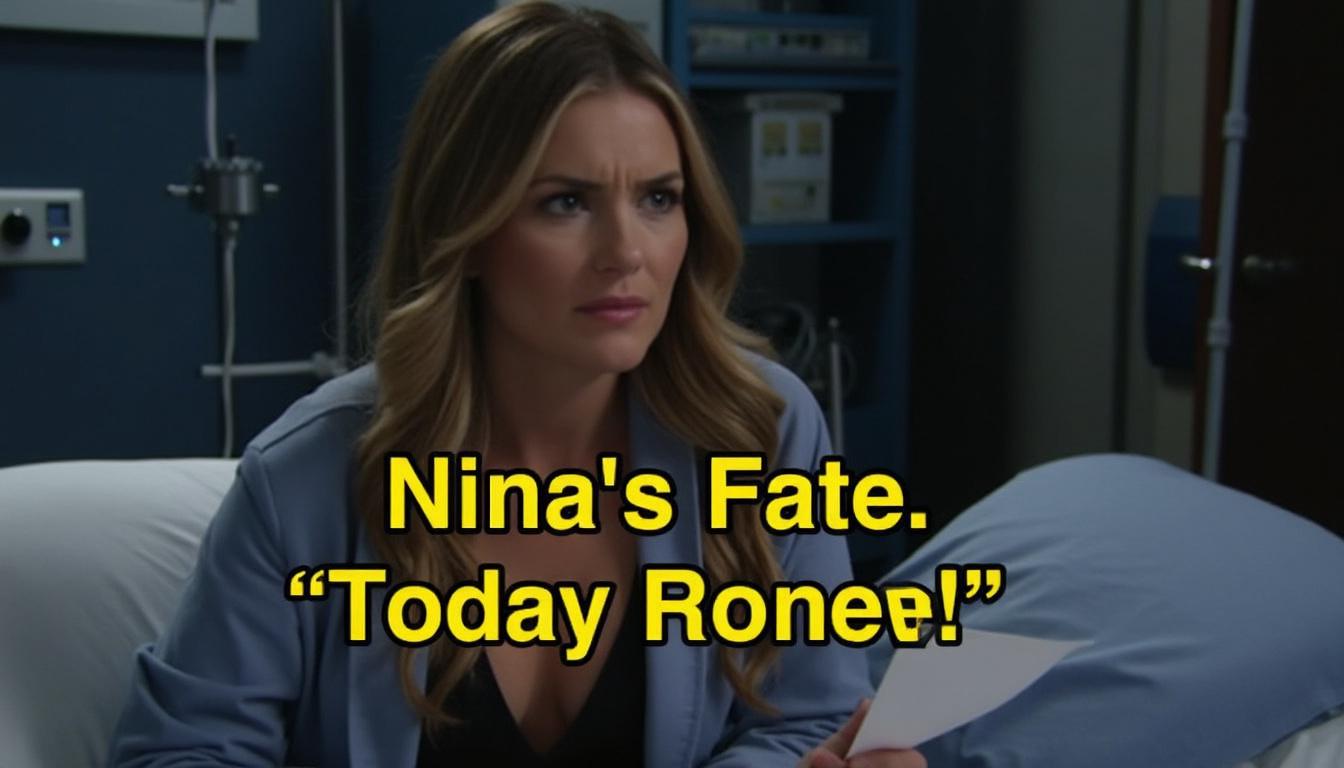In the ever-evolving narrative of General Hospital, the character of Nina Reeves has sparked a whirlwind of discussion among fans, particularly regarding her perceived selfishness. This perception has proven divisive, with various factions within the fandom expressing their frustrations and expired support for her character. It’s an intricate tapestry of emotional investment and the complexities of soap opera dynamics that shape audience interpretation.
Dynamics of Nina’s Selfishness: A Character Study
Nina Reeves, portrayed by Cynthia Watros, has often been placed under the microscope by fans of General Hospital, scrutinizing her motivations and actions throughout the series. A pivotal aspect of the discourse centers around her relationships, particularly with other key characters like Sasha and Willow. The ongoing turmoil, especially relating to Sasha’s pregnancy, has intensified the spotlight on Nina’s actions, often illustrating a self-serving agenda.

Character & Relationship Dynamics
At the heart of Nina’s developing narrative lies a rich tapestry of relationships that significantly impacts how she is perceived. For example, her bond with Sasha has recently undergone strain as tensions rise. Fans argue that much of Nina’s decisions are informed less by genuine concern and more by personal interests. Recent episodes showcase moments—like smirking during tense periods—that have left audiences questioning her loyalty.
The dialog surrounding Nina reveals several key factors that contribute to her controversial reputation:
- Involvement in Legal Battles: The custody battle between Willow and Michael has created a charged atmosphere, forcing Nina’s loyalties into the open.
- Seemingly Self-Serving Actions: Nina’s current actions have triggered discussions about whether they are instigated by genuine love or a desire to secure her place in Port Charles.
- Past Mistakes: A history of questionable decisions, including her tumultuous relationship with Sonny, looms over her, impacting how fans view her present choices.
These layers of character perception are indicative of the media representation of women in powerful roles. Often, females are unfairly vilified for holding ambitious positions or for making choices that are conventionalized as “selfish.” This brings forth questions about societal double standards and the portrayal of female characters in long-running series like General Hospital. Understanding these dynamics contributes to a richer analysis of Nina and the broader implications for female representation in media.
Fan Response: Social Media and Community Engagement
The eruption of sentiments across social media platforms encapsulates a crucial aspect of modern storytelling; the audience’s engagement significantly shapes character arcs. The response to Nina’s character illustrates a classic case of fan involvement impacting narrative development within soap operas.
Social Media Reactions
In recent episodes, as the plot thickened around Nina and Sasha, fans flocked to social media to express their opinions in droves. Through platforms like Facebook and Reddit, the community has voiced a myriad of sentiments, often polarizing. Here are some striking examples:
| User Comment | Sentiment |
|---|---|
| “Nina is and will be forever selfish. I hope Sasha doesn’t lose her baby.” | Negative |
| “Nina’s going to lose everything with her big mouth.” | Negative |
| “I had been rooting for Nina, but not anymore if she did this to Sasha!” | Negative |
As seen in the feedback collected from various sources, fans are struggling to find redeeming qualities within Nina. Many express an earnest desire for her downfall, showcasing a clear disconnect between her intentions and audience interpretation. Not only does this raise questions about narrative decisions but it also reflects the intense fan engagement that soap operas elicit.
Nina’s Character Development: From Villain to Anti-Hero
The transformation of Nina Reeves represents the complexities found within character development in long-form storytelling. The evolution from a tragic figure to a contentious individual raises questions about morality and redemption, key themes often explored in soap operas.

The Evolution of Character Perception
To analyze Nina effectively, one must observe the journey she has undertaken within the narrative structure. Initially introduced as a victim of circumstance, her character arc soon shifted as she found herself at the center of numerous scandals that painted her in a rather negative light. This shift has been both interesting and troubling for audiences, who often grapple with their feelings towards her.
Throughout her storyline, several elements contribute to this evolving perception:
- Tragic Background: Initially portrayed as a victim, her past experiences garnered sympathy, illustrating the complexity of character emotions.
- Connecting with Empathetic Characters: Building relationships with beloved characters led viewers to draw parallels between Nina’s experiences and their own sentimentality.
- Crucial Misjudgments: Decisions that appeared well-intentioned often spiraled into major narrative conflicts, leading to fan frustrations.
As Nina’s story continues to unfold, the question of redemption and morality remains at the forefront. The implications of her past choices fuel discussions about the complexities of human emotions depicted in these stories. It ultimately highlights how viewer interpretations can shift based on the multifaceted nature of contemporary characters in General Hospital.
Is There a Double Standard in Fandom?
The intense scrutiny that Nina faces raises an intriguing question: is there a double standard at play within the fandom? The landscape of character analysis often reveals societal biases, particularly around female characters in prominent roles. As Nina faces ongoing backlash from fans, comparisons with other characters (notably Carly) have sparked debates about equity in audience interpretation.
Comparative Analysis of Character Criticism
Audiences’ reactions to different characters can reveal ingrained biases and disparities in their assessments. Carly, another dominant figure in the series, has historically encountered her share of controversies but often seems to escape the depth of vilification directed at Nina. This inconsistency raises several points of inquiry:
- Character Favoritism: How do long-term connections with certain characters influence audience perspectives?
- Character Choices: Are mistakes treated equally when committed by male versus female characters?
- Fan Expectations: Do preconceived notions of stability dictate how characters are interpreted within their roles?
Such questions point to a larger conversation about bias in how audiences react to different story arcs. The contrast between perspectives on Carly and Nina illustrates a deeper issue around female representation—what happens when ambition is expressed by women and how that ambition is framed can unfairly shape audience reception.
Nina’s Future: Redemption or Continued Struggle?
As General Hospital delves deeper into Nina’s storyline, discussions about her future have intensified. The shifting tides present both challenges and opportunities for character growth and development. Nina finds herself at a crossroads, with fans eagerly anticipating the unfolding of her fate.

Character Redemption Arc
With the ongoing narrative pushing Nina into increasingly precarious situations, speculation abounds over her potential redemption arc. Fans grapple with questions of whether she can rehabilitate her public image and overcome the mistakes of her past.
Several factors will influence Nina’s potential redemption:
- Challenging Relationships: Leverage compelling connections with others to showcase a genuine change of heart.
- Consequences of Actions: Addressing the repercussions of her decisions may serve to humanize her character.
- Fan Engagement: Listening to audience feedback and adapting storylines could rebuild trust with viewers.
While it’s unclear whether Nina can redeem herself, the narrative provides fertile ground for exploration. The ongoing evolution of her character and audience response serves as a reminder of the dynamic interplay inherent in long-running serial dramas, exemplifying the intricacies of narrative analysis within contemporary soap opera dynamics.


